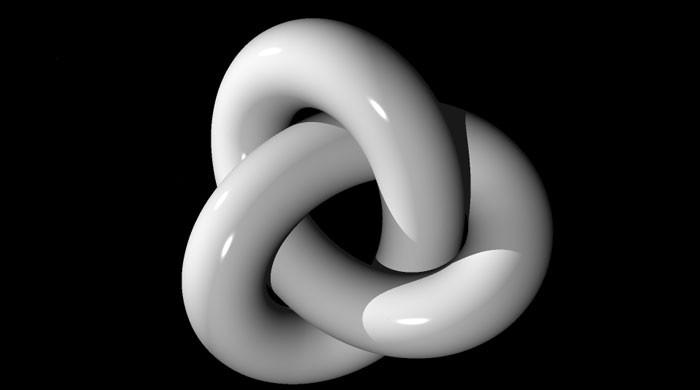Previous Guinness World Record was set in 2020 by a team that tied a knot containing 69 atoms
Researchers have created the smallest, tightest knot known, securing a spot in the Guinness Book of World Records, according to Gizmodo.
The knot, composed of 54 atoms chained together in a trefoil, is a continuous loop with no loose end and is made up of gold, carbon, and phosphorus, the New Scientist reported.
The team’s work describing the self-assembled “metallaknot” was published in the journal Nature Communications.
The knot is formulaically described as [Au6{1,2-C6H4(OCH2CC)2}3{Ph2P(CH2)4PPh2}3], or Au6 for short, about the six gold atoms in the knot.
But how does one determine the tightness of a knot at the molecular scale?
According to the team’s paper, the knots are “classified according to the minimum number of crossings when the reduced form of the structure is projected onto a two-dimensional surface.”
The newestand indeed, smallest and tightest knot in history breaks the record set by a team in 2020.
The 54 atoms long knot has a backbone crossing ratio (BCR) of 18, a significant improvement from the previous record of 69 atoms long with a BCR of 23.
The smaller the BCR, the tighter the knot. The new knot is tighter than the BCR of the tightest organic trefoil knots by a BCR margin of 7.3.
According to ScienceAlert, the knot is edging close to the theoretical limit of knot length. Previous research suggested that the smallest trefoil knot ought to contain “at least 50” atoms.
The recent accomplishment is not the only knot to hold a place in the Guinness Book.
The largest human knot was made in 2019 and involved 123 people.
Meanwhile, the largest Chinese knot in the Guinness Book was made by a kindergarten class, surpassing over 130 feet tall and 136 feet across, according to the book.

Dr. Thomas Hughes is a UK-based scientist and science communicator who makes complex topics accessible to readers. His articles explore breakthroughs in various scientific disciplines, from space exploration to cutting-edge research.







